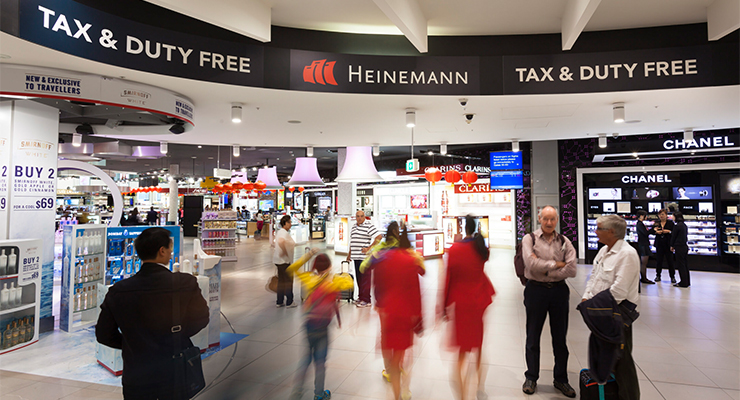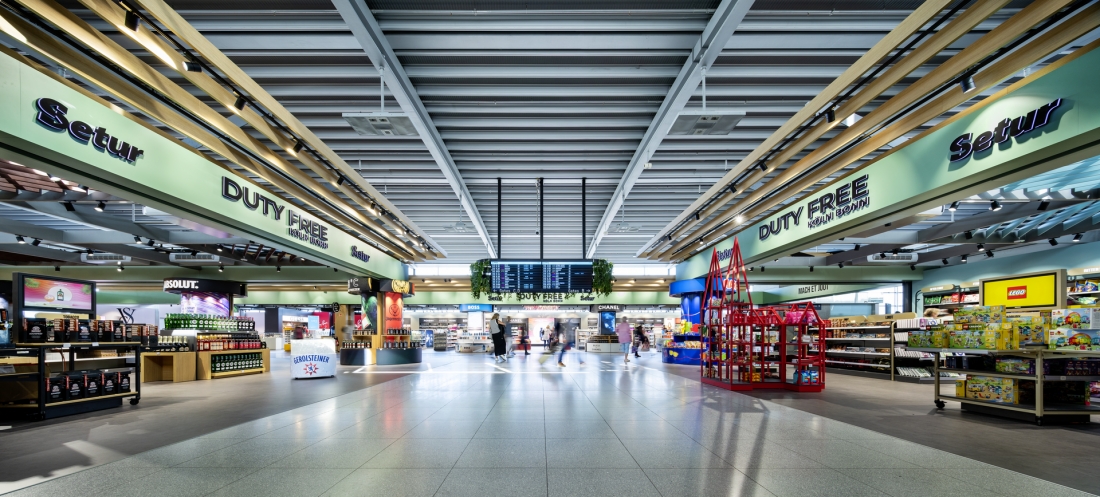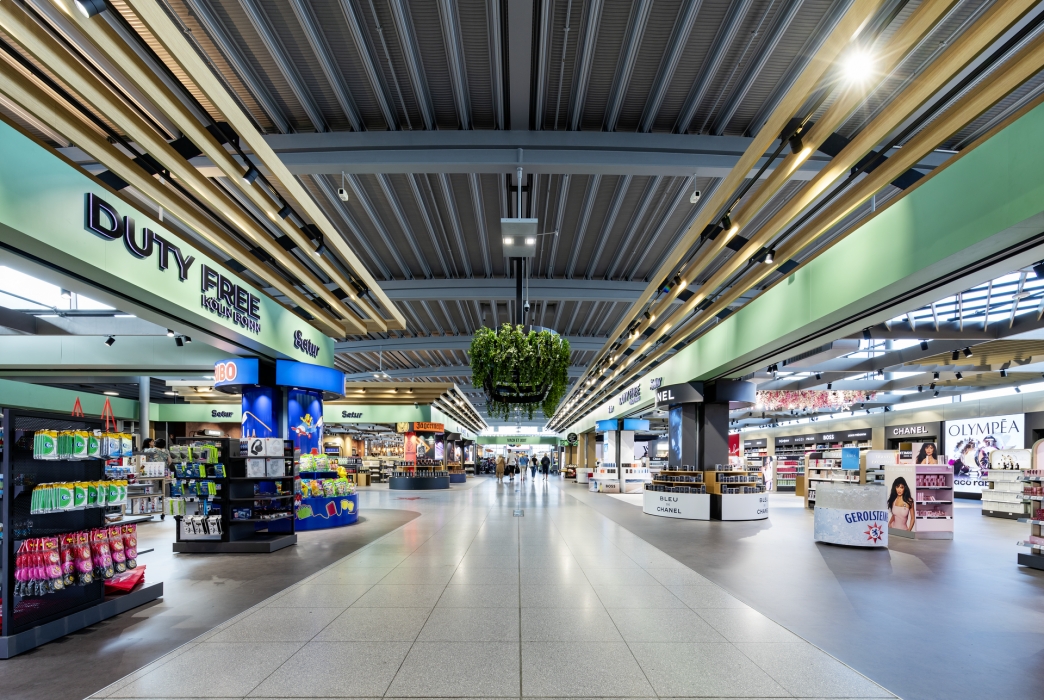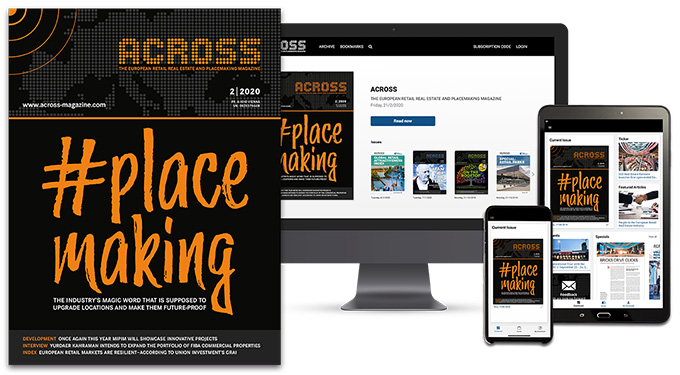What does retail have to look like at tomorrow’s airports in order to counteract existing developments? This question is at the core of the latest insight by shopfitting expert umdasch The Store Makers, which is dedicated to current trends that travel retailers should be addressing.
Below, five key trends highlight how retail can be optimized at airports to keep up with the evolving needs of customers with the help of shopfitting:
1. Experience Orientation
Travelers often spend several hours at the airport. To make the waiting time more exciting for passengers, airports are increasingly transforming their areas into entertainment hubs that combine retail with experiences. This creates places where brands are presented in a tangible, interactive and emotional way.
Through shopfitting, travel retailers can create precisely this quality of stay – through immersive store concepts, customized pop-up formats as a temporary stage and the targeted use of interactive technologies. Whether through the use of virtual reality or more classic store elements: The aim is to create retail spaces that will be remembered.
In short:
- Retailtainment & immersive stores bring brands to life
- Promote the use of interactive technologies
- Pop-up stores as staging platforms
- Best practice: Doha Hamad International Airport or Changi Airport (both winners of the Skytrax Airport of the Year Ranking 2024)
2. Digitalization
Digitalization is fundamentally changing the shopping experience at airports. Particularly in highly frequented locations where time plays a decisive role, smart stores offer customers an unbeatable level of efficiency and also score points with an innovative shopping experience. Autonomous stores and smart shopping concepts such as the cashierless REWE To Go at Frankfurt Airport or the robot restaurant SELF in Lisbon are examples of how technology is already revolutionizing travel retail.
Travelers are also looking for maximum flexibility and comfort. The need for a seamless shopping experience is particularly pronounced among younger target groups: For generations Y and Z, who are used to being digitally connected anytime and anywhere, an omnichannel strategy is therefore not a “nice-to-have”, but a basic requirement.
Sophisticated store concepts allow physical spaces to be combined with digital experiences in shopfitting: Whether automated self-checkout, digital product information or furnishing elements for click & collect solutions – with the integration of holistic concepts and one-stop store solutions, shopfitting can support retailers in the implementation of future-proof stores.
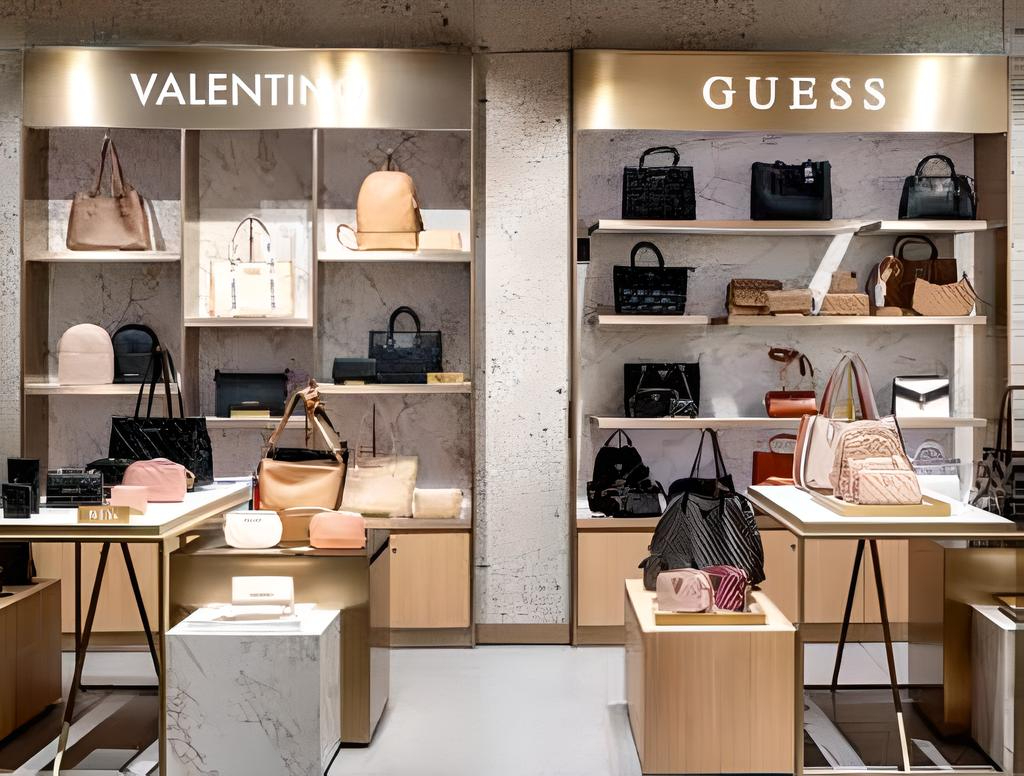
Gebr. Heinemann – a long-standing customer of umdasch The Store Makers – operates duty-free stores and brand stores at airports all over the world and shows how it can be done. With a Click & Collect service, the travel retailer offers its customers a relaxed shopping experience from the first to the last second: products can be pre-ordered online and picked up on the day of travel or conveniently delivered to their homes.

“Digital services must be thoughtfully integrated into the store design – ideally in such a way that they invite customers to explore further,” says Daniel Hundegger, Key Account Manager & Teamlead Project Management at umdasch The Store Makers DACH.
In short:
- Offer travelers maximum efficiency with phygital experiences
- Omnichannel as a duty, not a choice
- Best practice: Gebr. Heinemann with relaxed Click & Collect service
3. Sustainability
In addition to sustainability aspects, the decline in affluent business travelers is also driving this trend. At the same time, more young travelers are looking for affordable, sustainable shopping alternatives. Store concepts are in demand that not only incorporate sustainability into the product range, but also think along with it in terms of construction and concept: through resource-conserving materials, modular construction methods and durable designs. This creates travel retail that remains significant in the long term – both ecologically and economically.

“Both millennials and Gen Z are showing purchasing behavior that is characterized by climate awareness. Re-sale concepts must therefore also find a place in travel retail,” explains Michael Ripfl, Sales Director Travel Retail at umdasch The Store Makers.
In short:
- Sustainable thinking shapes purchasing behavior
- Classic travel retail reinterpreted: Pre-loved stores for luxury items at airports such as Lisbon or Copenhagen
4. Authenticity
Generations Y and Z, which are becoming increasingly relevant for airports, expect more than just functionality and supposedly lower prices: For them, brands are not just the sum of their products, but must create a holistic and authentic image in all its facets. Travel retail has a unique opportunity here to play with the concepts of “Sense of Place” and “Sense of Belonging” and to emotionally bind travelers from all over the world to the destination with local flair.
Setur in Cologne/Bonn. With the striking shelf in the shape of Cologne Cathedral (image on the left), the designers from umdasch The Store Makers set another regional accent in the duty-free store at Cologne/Bonn Airport. /// credit: umdasch The Store Makers
Using the Setur duty-free project as an example, Maik Drewitz, Director Shop Consult at umdasch The Store Makers, shows how this can be achieved: umdasch has brought the culture of the Rhineland into the terminal via the shopfitting and thus created a place with identity: With “Kölner Brückengrün”, the integration of Beethoven – whose birthplace is Bonn, and more.

“Our strength was to offer the customer a holistic solution from a single source – from design and shopfitting to general contracting and digital services such as self-checkout. At Setur, we have combined all of this into a modern and unique shopping experience that also appeals to the young target group,” explains Maik Drewitz, Director Shop Consult at umdasch The Store Makers.
“When it comes to travel retail in particular, it pays to rely on an experienced partner who understands the target group and the entire life cycle of a store and thus creates unique experiences – from storytelling to technical implementation,” adds Drewitz.
In short:
- Authenticity and individuality as a success factor
- “Sense of Place” is about local elements in shopfitting
- “Sense of Belonging” is about personalized offers
- Best practice: Duty-free operator Setur in Cologne/Bonn
5. Self-care & Individuality
The trend towards wellness, sports and mindfulness offers at airports is a response to the values of millennials and Gen Z. These generations attach great importance to self-care and mental health – not only in everyday life, but also when traveling. Travelers expect offers that are good for body and mind: whether napcabs, yoga lounges or relaxation oases. Instead of focusing exclusively on premium lounges, the aim is to create recreational spaces for everyone.
Well-being zones can also be integrated in retail: through innovative space concepts, special furnishing elements and and multi-sensory design. And this is precisely what is becoming a decisive factor in the competition for travelers, because: Where people feel comfortable, they stay longer.
The airport of tomorrow is more than just a transit point – it is a destination that enriches the travel experience and seamlessly adapts to the needs of a new generation of travelers.
In short:
- Travelers want to bridge long waiting times in a meaningful way
- Increase the quality of stay in retail
- Selfcare at the airport: e.g. napcabs in Munich or yoga and regeneration rooms in Helsinki
Find the full report as well as other inSites editions by umdasch here.
